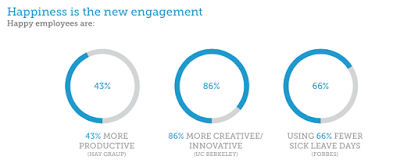
This post is one of a series highlighting insights, recommendations and resources from TrendsWatch 2016, the latest edition of CFM’s annual forecasting report. Download your free PDF copy here.
It may provoke some giggles that TrendsWatch, a born-digital publication focused on the future, is also produced on old-fashioned paper*, but in truth the reports of the death of print publications are exaggerated. Engaging with a 3-D paper object is different, and in some ways richer, than digital reading.
But digital offers its own advantages–such as the ability to embed links. Downloading the PDF version of TrendsWatch enables you to click through to the stories that informed my thinking, and back up my arguments. (Think of them as a digital, streamlined version of footnotes.)
However, I know not everyone will click through the many, many links embedded in TrendsWatch, so I’m going to periodically highlight some of the associated stories and resources here on the Blog.
To start with an easy, addictive win (I hope), today I’ll point you to some online resources that let you calculate, play with and manipulate information. Think of them as a loftier version of the Fbook quizzes which some people are unable to resist. (You know who you are.) Here are two I particularly enjoyed testing while I worked on the report:
The ROI Calculator from Delivering Happiness. As I note in the report’s introduction, this year’s trends form an overlapping Venn diagram. For example: the chapters on Labor and Happiness both touch on the increasing number of companies consciously cultivating employee happiness. Personally, I believe in a pragmatic approach to social change. It’s great when other people embrace your values, but if they hop on the bandwagon because it is in their self-interest, well, that works too. Changing behavioral norms (whatever the underlying motivation) eventually shifts cultural standards. In this case, some CEOs embrace employee happiness as a metric of success because they believe, philosophically, that it’s the right thing to do. This ROI calculator from Delivering Happiness helps make the case that investing in happiness improves the financial bottom line as well. Can you resist seeing how much your organization might save by cultivating happiness at work? Of course, the staff at Delivering Happiness are using the calculator to market their services–but that doesn’t mean they are wrong. And they present information on how they arrived at their estimates. Even if you’re skeptical, questioning their numbers can prompt you to think more deeply about the potential ROI of happiness in the workplace.
 |
| The Business Case for a Happy Workforce |

The OECD Better Life Index is another online tool I came across in the course of investigating non-financial metrics of success. Created by the the Organisation for Economic Co-operation and Development, this index is part of OECD’s multi-dimensional approach to measuring economic performance and social progress. Their online Index prompts you to input how you would weigh factors like income, jobs, housing, education, life-satisfaction and work-life balance in assessing a country’s “productivity.” (According to OECD, I should admire the success of Australia, Denmark and Norway.) Playing with this index is a good way to explore your own value system, and how you might go about designing metrics that reflect more than a country’s economic output–or, by extension, that of your community. Which prompts a question to guide your museum’s strategic planning: how does your organization contribute to these measures of success?
And here is a third resource, one I did not include in the report, but highly recommend. It can support exploration of one of the most important challenges facing museums is building a diverse workforce (as I mention in the TW16 chapter on labor). One significant barrier to building a diverse staff is hiring bias. As HR specialists point out, when it comes to fair recruitment practices, it helps to be aware of one’s own unconscious biases. This self-knowledge won’t guarantee you can banish bias from your hiring decisions, but it helps. The Southern Poverty Law Center’s Teach Tolerance project offers a number of online Hidden Bias Tests. You may find your results both sobering and enlightening.
And please–drop me a note, or post in the comment section below, to share other online tools that address happiness, or progressive labor practices, or any of the other topics covered in TrendsWatch
*I just sent the page proofs for TrendsWatch off to the print, and the report should be available from the AAM Bookstore in a few weeks. You will be able to order copies online or pick up a copy at the AAM annual meeting here in DC this May.








